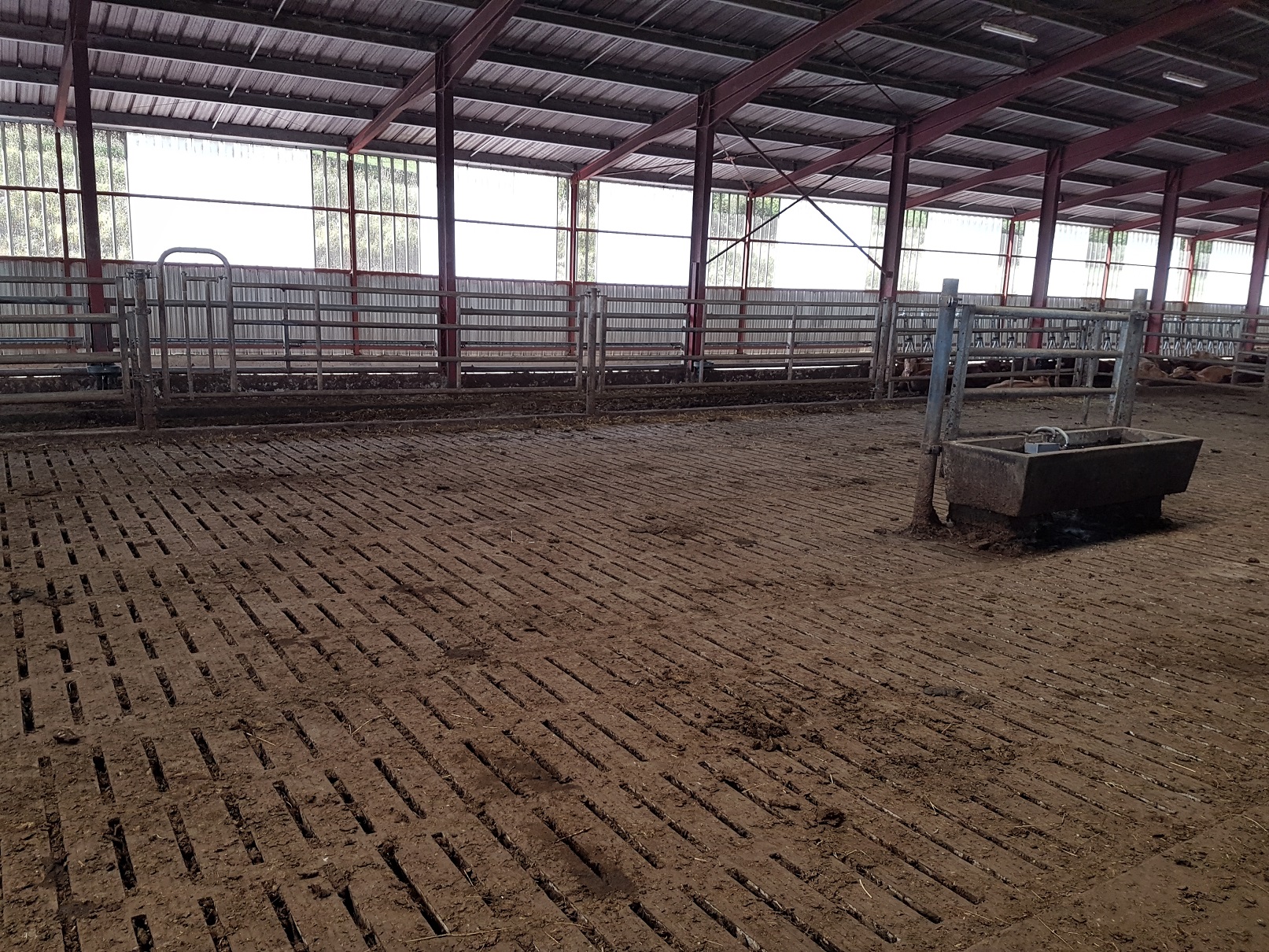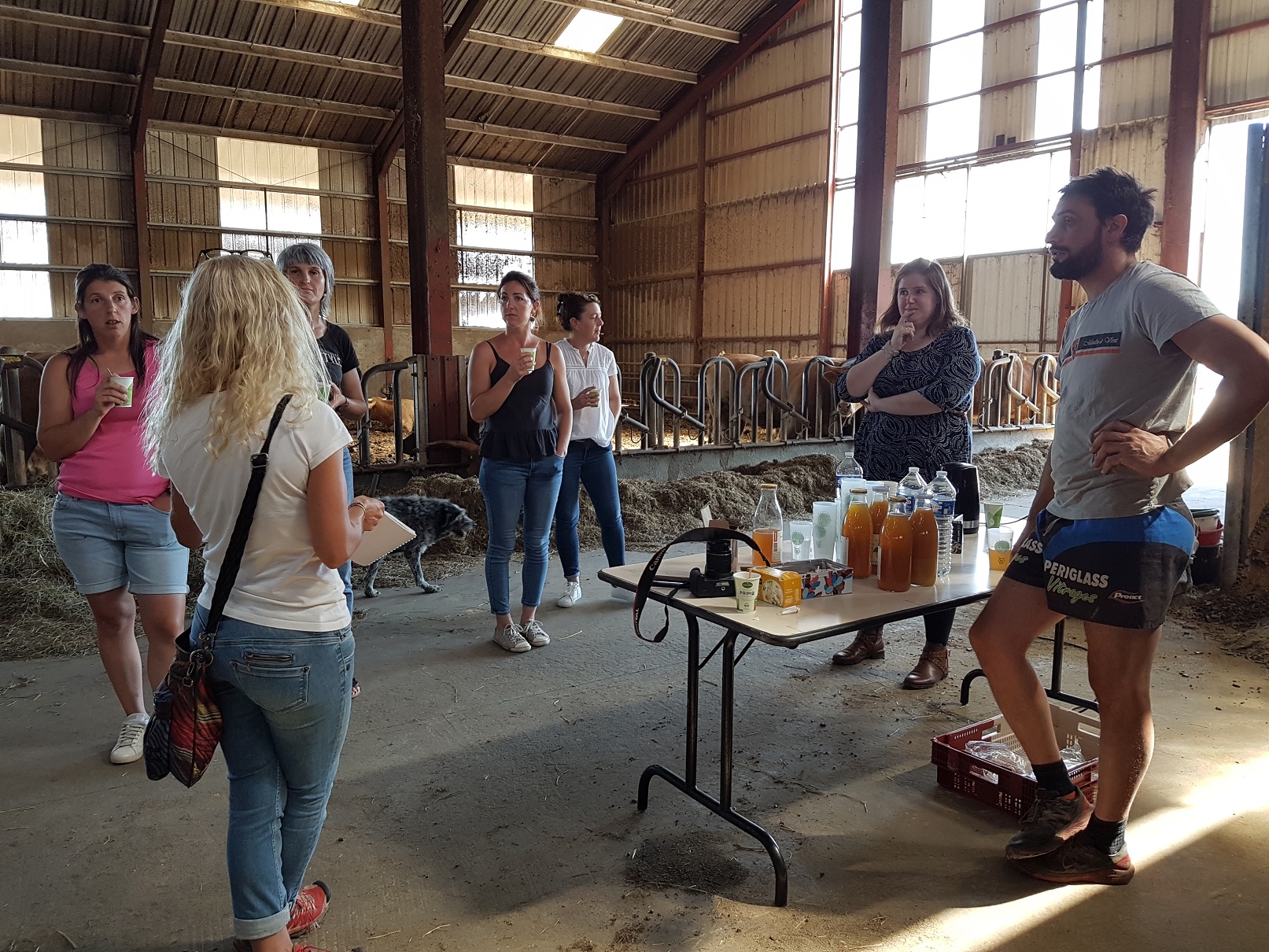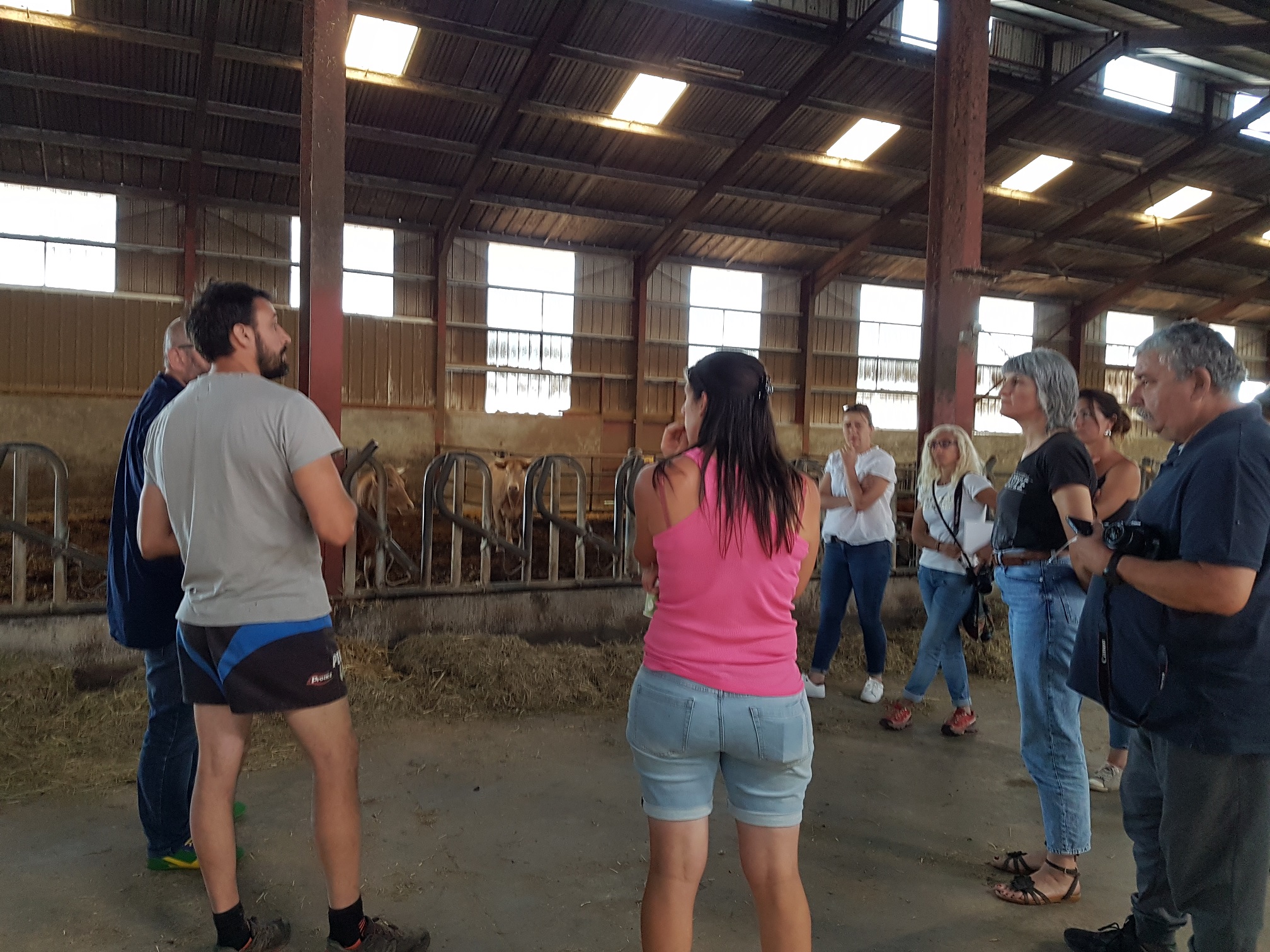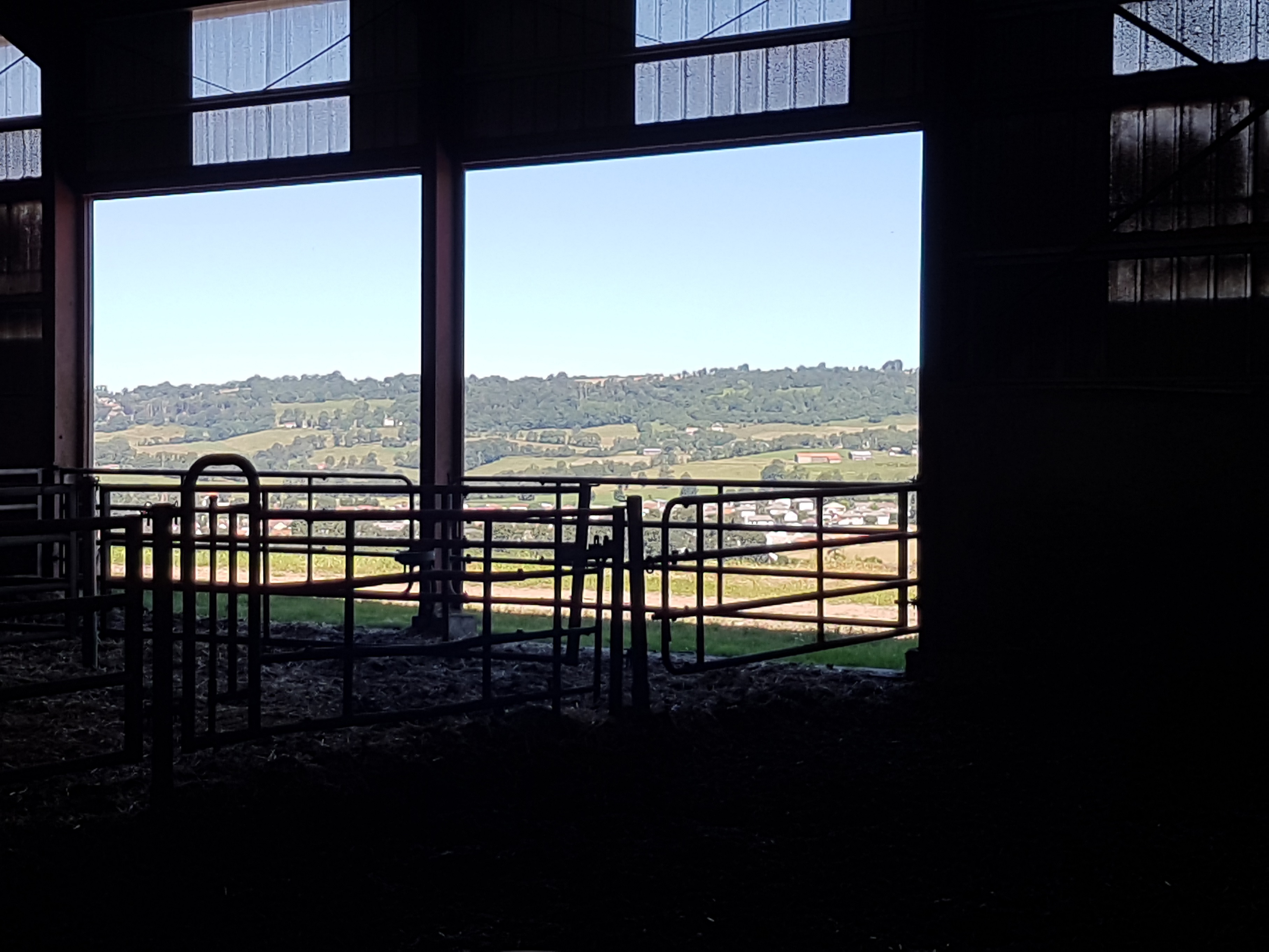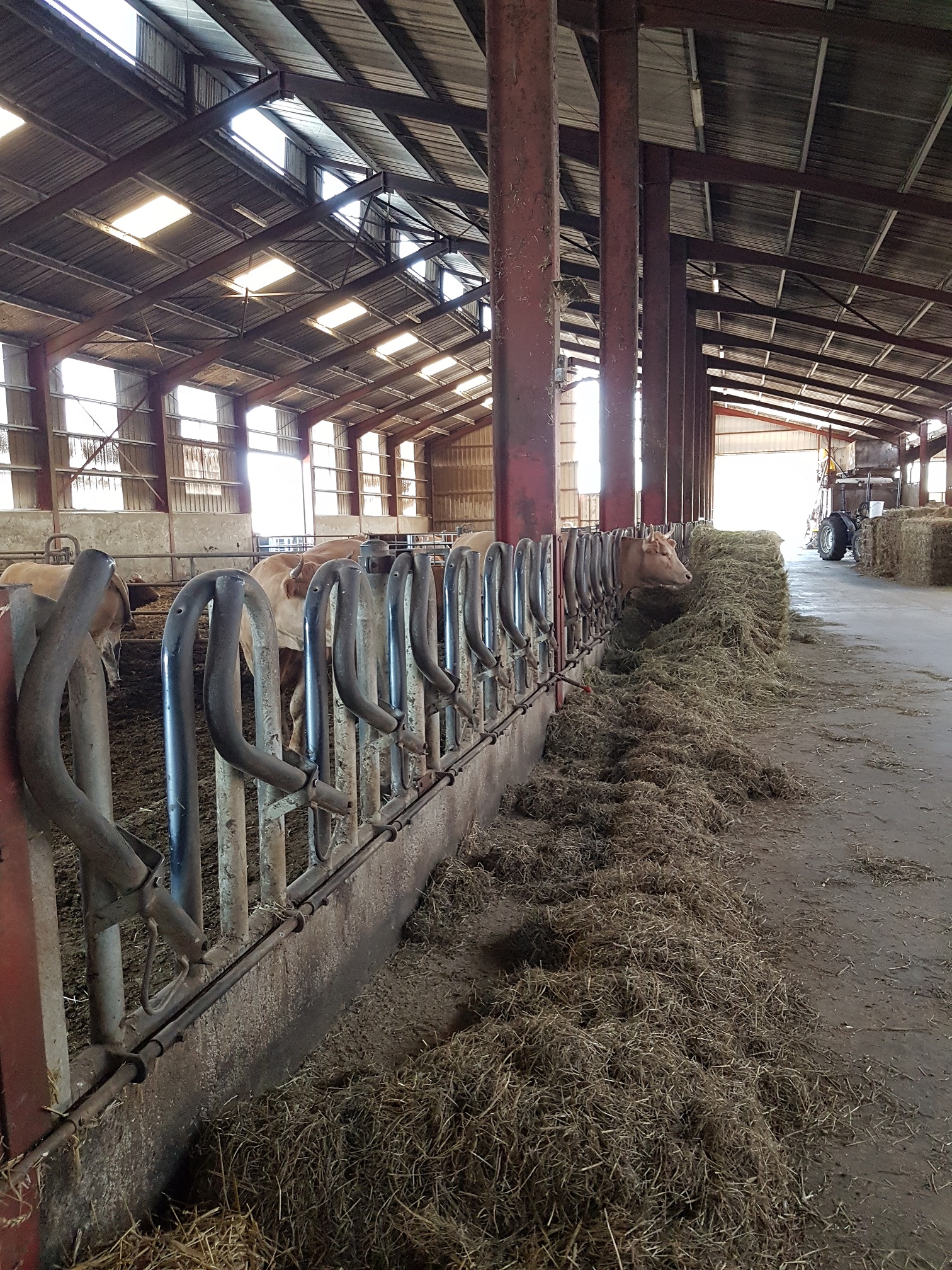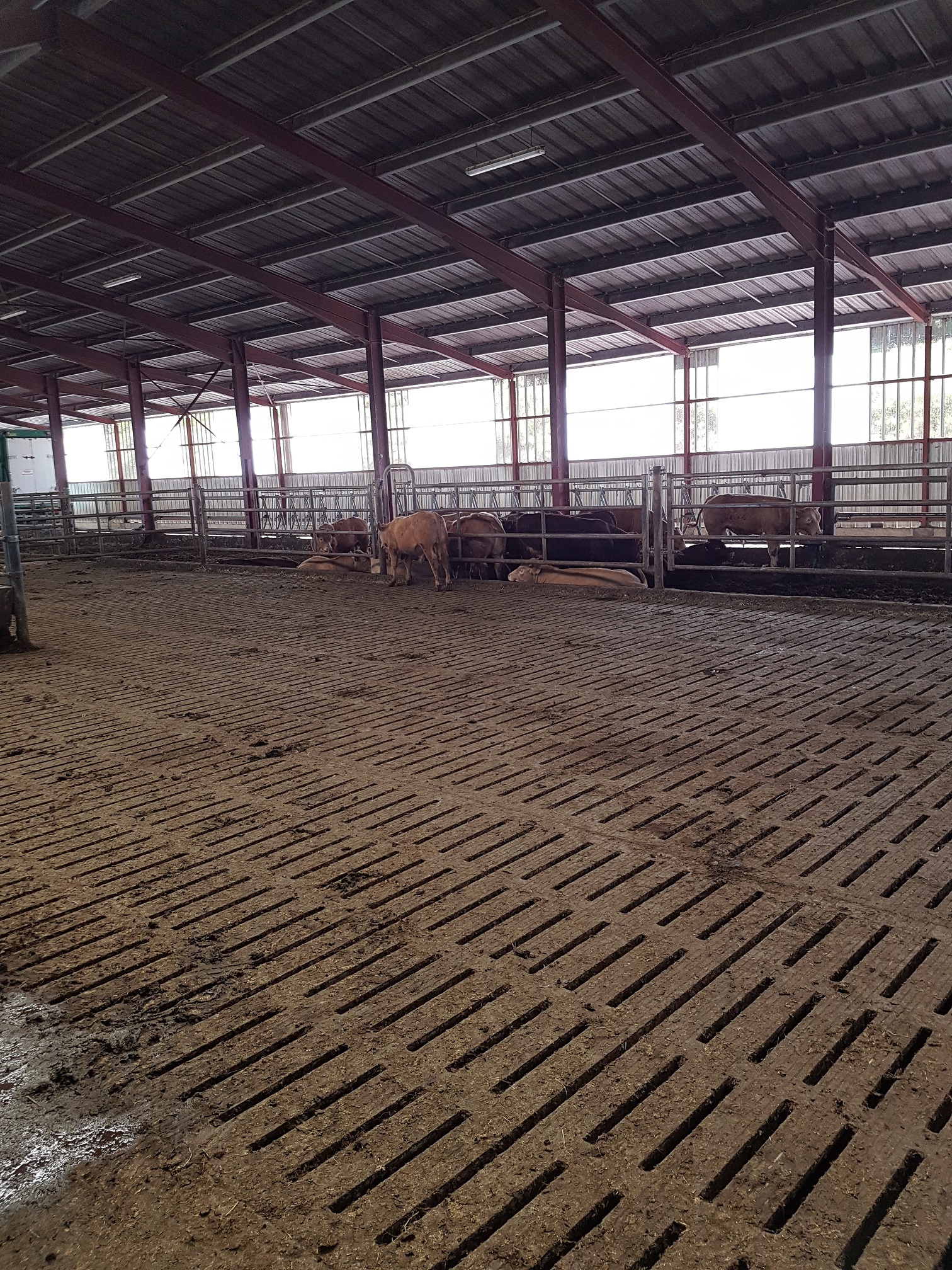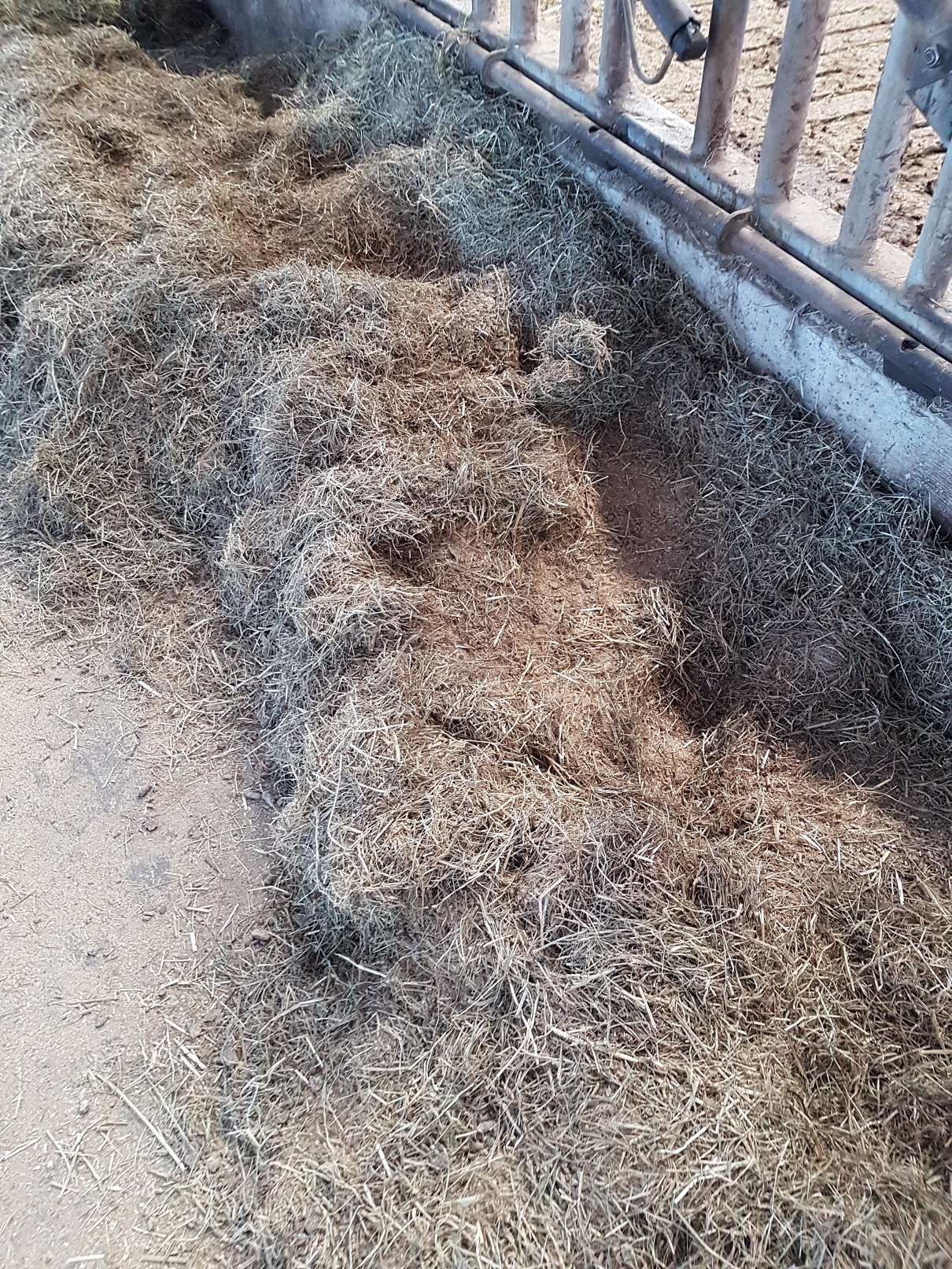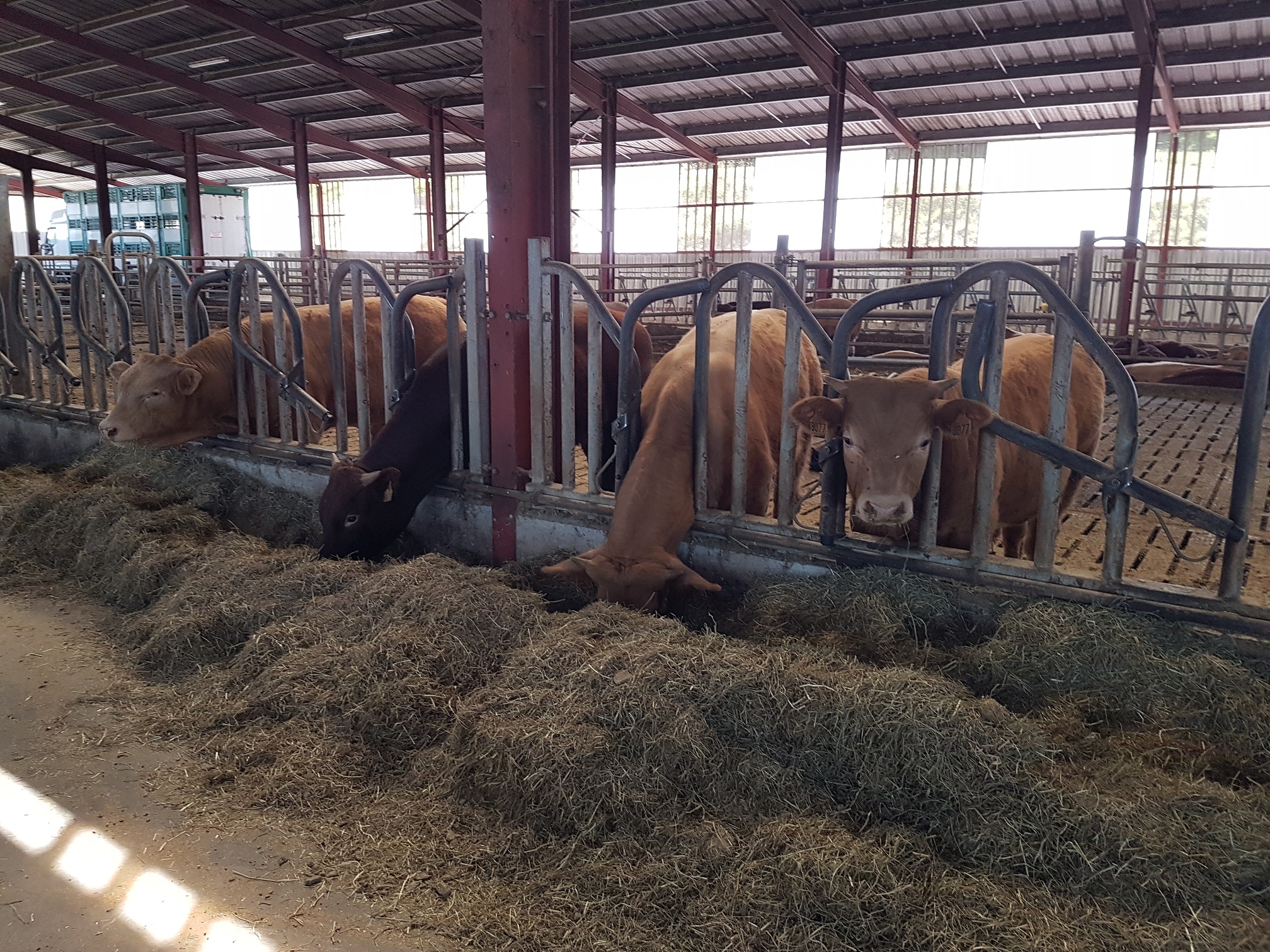Introduction
This demonstration concerns the use of slatted floors for suckler cows and was carried out on a commercial farm, the GAEC d’Ayvalys’ farm, which has invested in this kind of floors in their farm buildings in 2017. The demonstration took place in the barn with farmers and advisers. The farmer described his farm and the livestock building, explaining why has chosen to invest in slatted floors. Then exchanges of information took place between the farmers and advisors
What type of beef system was this demonstration applied to?
The demonstration took place on a suckler cow farm: the 2 farmers work together and have 160 cows of the Salers breed. They sell the young males to be fattened primarily in Italy and they keep all females : some for replacement of suckler cows and others to ben fattened and sold in a local store using a contract that takes into account the production costs of the farm.
The main benefits of the slatted floors are:
- Reduction of the use of straw: half of the building has a 100% slatted floor, therefore the use of straw could be reduced by 50%
- Reduction of work: there is no work to remove litter neither to scrape it off as the floor is 100% slatted
- Less dust in the building which generates a better living environment for the cows
- The pit under the slatted floor is sufficient for the whole winter
The main obstacles for implementing this innovation are:
- Getting used to the spread liquid manure that contains less nitrogen for fertilizing the soils
- Bulls can have difficulties during the reproduction period inside, but with rustic Salers breed this problem can be overcome
- It can be more difficult to regulate the temperature inside a building without manure. However in this farm the calving period is not taking place during the winter, so this problem can be managed well.
The costs of the investment have been 130,000 € for a slatted floor with a width of 10m and a length of 86 meters. The farmers decided to invest also in photovoltaic panels on the roof for the building to bear the financial part of the investment.
The farmers use 6 kg less straw per day, which is a very important saving for a farm that usually purchases all straw on the market. Moreover, there is the advantage of carbon recovery and its storage using this innovation. Finally, no external purchases are needed to ensure animal bedding.
In conclusion this practice can be recommended for farmers without cereal production, as no straw needs be purchased anymore. At the medium term these savings are able to contribute to finance the investment in slatted floors . The question of the inside temperature and paws suffering must be considered in relation to the breed the farmer is using and to the calving period the farmers usually adopts.
An alternative can be to have part of the barn on slatted floors and the other part with slatted floors.
Author: Marie Penn, FNB - French National Beef Cattle Federation
